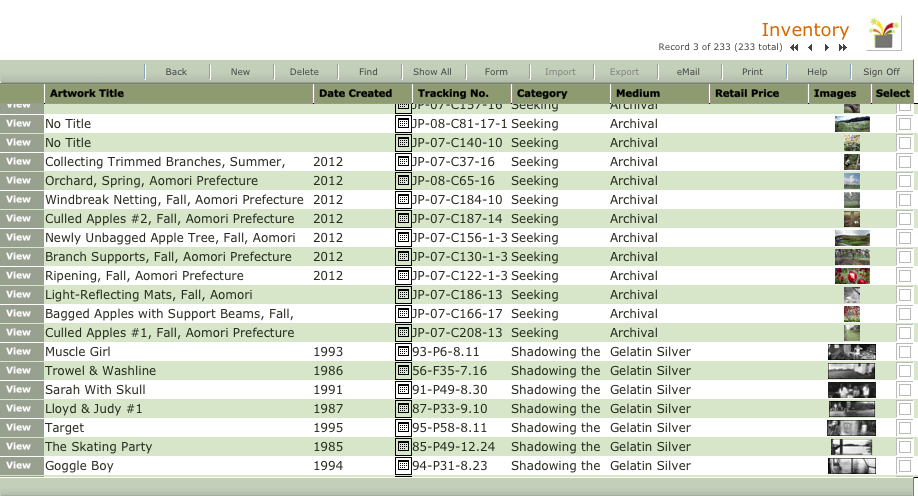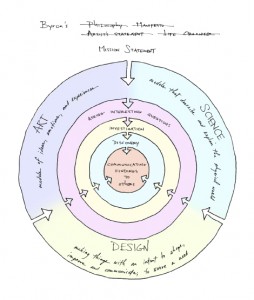I've been a pretty organized person over the years when it comes to my art career. But when it comes to keeping track of everything, I finally realized how great it would be if I could keep most records in one place.
I've got folders on my computer that contain Word docs, Excel spreadsheets, FileMaker databases, etc., and I'm constantly having to dig through those files in order to cross reference the information in them. In addition, I've been using Excel for my inventory database, but have been frustrated by its limitations. The following images give a visual of what I'm talking about: 


You can imagine how many files are contained within these folders. Kind of crazy.
I was aware of inventory software for artists such as Flick! and eArtist, but after looking into them further, decided that they weren't for me.
Then I discovered GYST software. GYST stands for "Get Your Sh*t Together".
Created by artist and educator Karen Atkinson, GYST does far more than even the most fanatically organized person could ever need, which is one reason why I love it. Here's a screenshot of an individual artwork record in GYST. Note that you can add detailed information into any of the blue tabs found in the middle of the window:  And if you want to look at your entire database of artwork, it will show up as a list like this:
And if you want to look at your entire database of artwork, it will show up as a list like this:  You can pick and choose which features you want to use in GYST. Not only will it allow you to keep your inventory up to date, it will also help you keep track of any proposals you may have out, artist's statements, your resume, contacts, research notes, billing, etc., and it's all found in one place on your computer. Heaven!
You can pick and choose which features you want to use in GYST. Not only will it allow you to keep your inventory up to date, it will also help you keep track of any proposals you may have out, artist's statements, your resume, contacts, research notes, billing, etc., and it's all found in one place on your computer. Heaven!
Check out the GYST blog, as it's a great resource for professional practices information.
I should add that my only beef with any of the above-named inventory databases is that they are not particularly intuitive or user-friendly, so there is a definite learning curve involved at first. If someone could come up with one that is relatively easy to use from the get-go, I would not hesitate to use it.
 Now I just have to drill that sentence into my head: "I take the familiar and make it strange." and use it whenever I'm asked what kind of work I do. If only I could do that to the degree that Seamus Heaney could!
Now I just have to drill that sentence into my head: "I take the familiar and make it strange." and use it whenever I'm asked what kind of work I do. If only I could do that to the degree that Seamus Heaney could!




